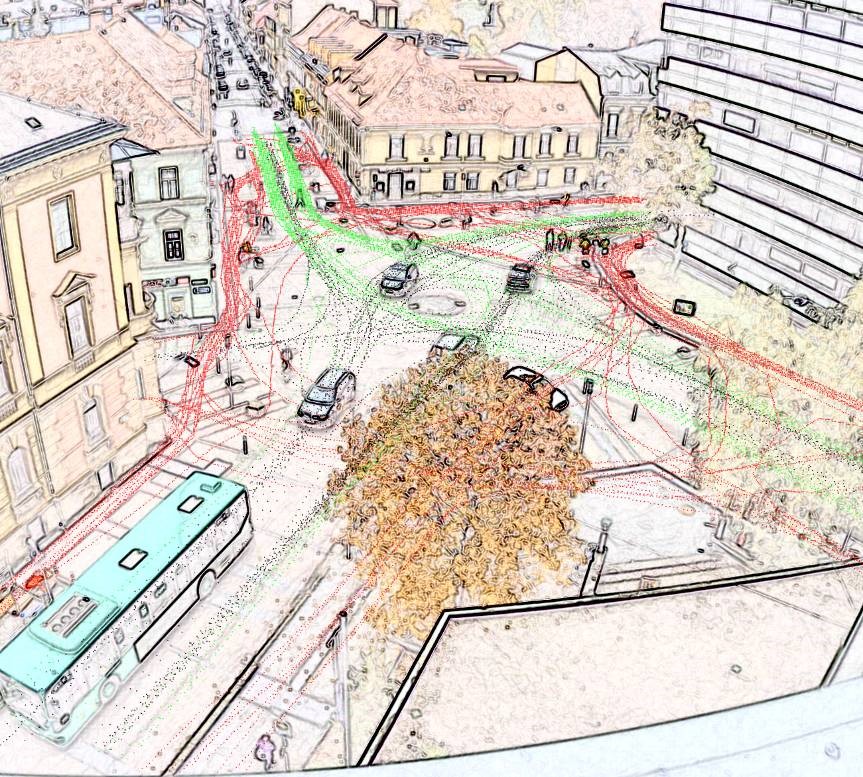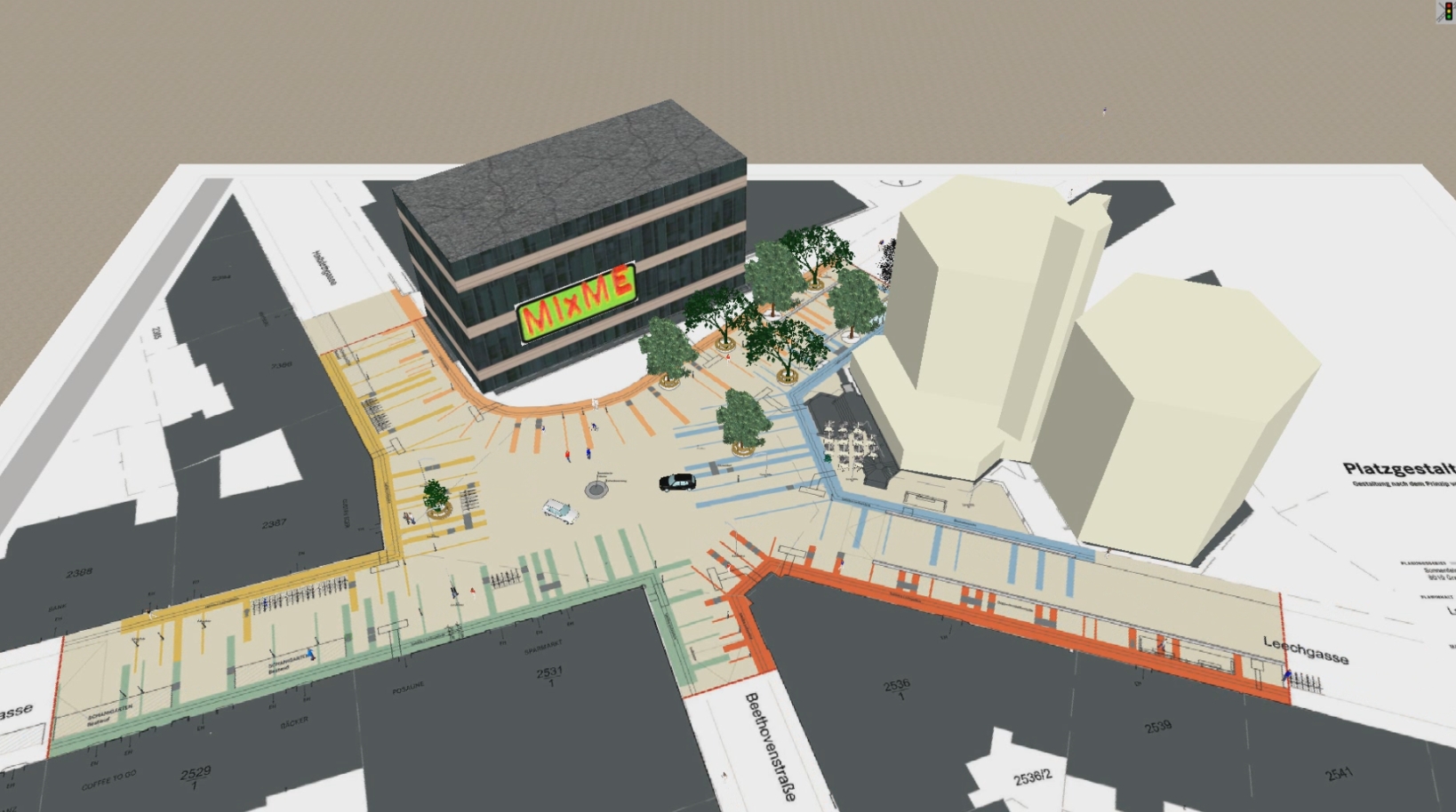Mixed Traffic Microsimulation Environment
Shared Space and similar mixed traffic philosophies can be compared to toolboxes where a flexible and sensitive way of application is necessary. Planning tools as microscopic traffic simulations don’t provide sufficient degrees of freedom and capabilities to reproduce dynamic and social interaction yet.
MixME is an extended multi-agent social-force simulation model which describes the impact of social and technical interaction of traffic dynamics by establishing fields of force in road spaces similar to physical models in Newton dynamics. It models interaction processes between motorized and non-motorized traffic as well as the effect of infrastructural parameters and layouts.
Calibration and validation have been carried out based on real data, generated by semi-automatic tracking and classification of video footage. A newly developed tool offers high efficiency and quality in the trajectories acquisition from pedestrians, bicycles and cars.
Reprojected real trajectories of road users at the Sonnenfelsplatz in Graz
The trajectories of pedestrians, cyclists and cars have been acquired from the Sonnenfelsplatz in Graz and Gleinstätten (both Styria) which had been redesigned following the Shared Space philosophy in 2010 and 2011 respectively.
The interaction model applies methods from game theory and has been calibrated with a set of data of conflict analysis. The findings are particularly interesting because they were able to show mathematically that the social and defensive behavior is one of the main factors for solving or avoiding road traffic conflicts.
Rendered frame in the final Shared Space simulation
The final simulation of the Sonnenfelsplatz in Graz showed the potential and the constrains of the implemented model. The realistic simulation of infrastructural measures offers support in the redesign of roads and squares and can increase the effectiveness of its implementation. The 3D visualization improves the communication of the simulation results and makes a major contribution to participative planning processes and decision making.






